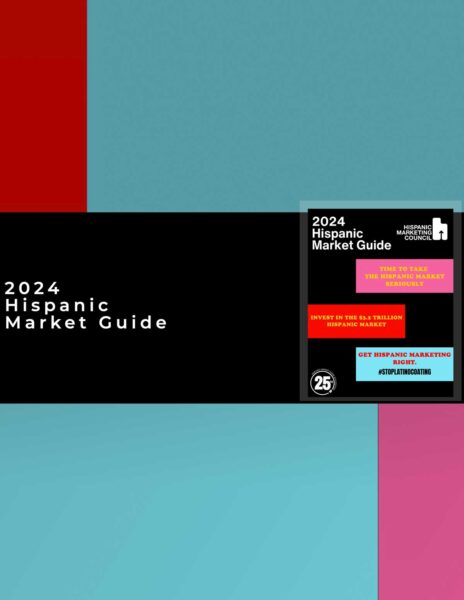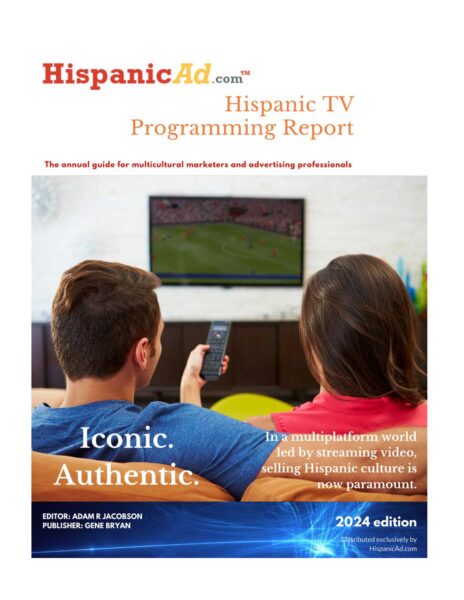AHAA Reveals Results of Generational Segment and Cultural Orientation Study Commissioned by AARP
May 3, 2013
“To know thy own target audience” could be the mantra of today’s successful marketing campaigns. Hispanic Millennials, GenXers and Boomer generational segments have unique consumer buying patterns. How they view the marketplace is influenced by a combination of macro-trends of their respective generations, by their lifestage priorities, and by their cultural orientation. This AHAA study, in collaboration with AARP, Targeting the Best Hispanic Consumer: A Generational and Cultural Orientation Study, dives into the differences in buying behavior of these segments as well as how they compare to their general market counterparts. In doing so, this study identifies business building opportunities for marketers.
In this time of a growing Hispanic demographic, corporate focus on ROI, and an increasingly competitive market, Thought Leadership is vital for Hispanic marketers to succeed. Through a series of research studies, webinars and strategic partnerships with the best market research companies, AHAA is leading the charge to help educate marketers on the increased need to segment properly for higher ROI and not treat the vast Hispanic market as a “one size fits all.”
The study, underwritten by AARP, used Scarborough USA(2012) to measure product usage and Doublebase GfK MRI (2012) to measure attitudes and conducted a broad field study that tied the findings to key cultural metrics.
Generational buying patterns and behaviors reveal new opportunities
There have been significant demographic changes since 1980. Sixty percent of all Hispanics are U.S. born, and there are record numbers of multigenerational and multiracial households in the U.S. Coupled with linguistic and cultural differences among Hispanics and the expansion of online and social media, marketers are faced with new challenges and need to take greater measures to understand the differences among Hispanics.
The AHAA Generational Study delved into how generational segments behaved towards several aspects of Latino and Anglo cultures, such as food, music, language, media usage, and celebrations among others, and how the variations play a role in different category buyers when contrasted by generational segment. AHAA found that the cultural orientation of different category buyers often varies, widely suggesting that marketers that leverage relevant cultural cues to its target audience by generational segments can create a greater competitive advantage than those who treat all Hispanics (from Boomers to Millennials) as one monolithic segment.
Specifically, the study points out that there are huge opportunities for marketers in key categories where Hispanics are more likely to be its buyers.
Here are six major areas that sum up the findings:
1. Life is Wireless – All generational segments are 77 percent more likely to plan to switch wireless plans than their Non-Hispanic counterparts.
2. Life is Entertainment – Hispanic Millennials are 40 per cent more likely than non-Hispanic Millennials to attend opening weekend.
3. Sweet Home Means Furniture – Hispanics in total are 40 per cent more likely than Non-Hispanics across all generational segments to purchase furniture.
4. Fun is Also Traveling Abroad – 26 percent of Hispanics in total are more likely than Non-Hispanics to travel internationally, especially among Latino Boomers (50%).
5. The Globe Matters – Latinos are eco-conscious with their purses conserving water, buying energy efficient bulbs and home windows.
6. Family Remains the Top Priority – Latinos over index on purchasing children’s clothing for their families, especially among older Millennials and GenXers.
Additionally, Latino Generational segments differ from each other in buying patterns, partly based on Generational macro-trends, as well as socio-economic and lifestage priorities.
1. Latino Millennials (18-29 years of age), representing about 20 percent of the 51.7 million Millennials in the U.S., are most likely of all Latinos to revolve their lives around wireless technology and plan to buy multiple screens. They use convenience stores and quick-serve restaurants more than other Latino generational segments. Additionally, they are most likely to use debit cards and check cashing services. They are the generation most likely to have bought a used car.
2. Latino GenXers (30-44 years of age), at the peak of their income producing years, are just one step behind Millennials in technology adoption but can afford bigger and more devices. At 19 million and growing, they are more likely than other segments to use credit cards but not yet fully financially invested besides owning their own home. They make online purchases and are more likely to buy cosmetics, shoes, home accessories, games, toys and children’s clothing.
3. Latino Boomers (45-64 years of age), accounting for nearly 11 percent of the 81 million Boomers in the U.S., are the most likely out of all the generational segments to have a strong interest in preserving their health and wealth, investing in market and mutual funds, life & health insurance. Nevertheless, they also deeply enjoy shopping using the most department store cards. They over index on planning to buy additional computers, using dry cleaners, traveling abroad and driving new cars.
Culture is a common bond
U.S. Hispanics do not live in one culture, but two… the question is, which one? And what aspects of each culture are they embracing? It is important to differentiate between acculturation and cultural orientation: acculturation measures demographic variables such as language use, birthplace and media consumption, while cultural orientation measures cultural dimensions such as food, music and values. While measuring cultural orientation helps describe how Hispanics are culturally similar or different to each other and to non-Hispanics, understanding cultural orientation is what helps marketers tailor their messaging effectively because it uncovers aspects of culture, which Hispanics have shown an affinity for.
The AHAA Generational Study revealed that Hispanic cultural duality across all Hispanic generations appears well balanced, but younger Millennials have a higher Anglo cultural orientation than the other Hispanic generations. Marketers must acknowledge not only the changing demographic landscape, but the “cultural duality” – the affinity toward two cultures – among Hispanics.
This means that marketers with specific opportunities skewing towards a certain generational segment may want to investigate the specific needs and the cultural orientation nuances of their particular target. As millions of Latinos expand across all lifestages, more specific category opportunities abound, oftentimes requiring a mix of broader strategies and tactics.
Conclusion
As part of the AHAA’s Thought Leadership strategy, the Generational Study findings pave the way for deeper analysis by marketers for their specific categories and should be used as a starting point. All three Hispanic generations have significant Hispanic values in their DNA, even though they have varying degrees of Anglo orientation. This suggests that great skill will be required to effectively reach them, as well as structure persuasive messaging. Understanding the differences and similarities of each segment can be used to plan how to reach them with broad reach media as well as more targeted ways to deepen engagement. Understanding the generational and cultural orientation differences can help define targeting priorities for product and service marketers.
For more information on this study at CLICK HERE.
http://ahaa.org































